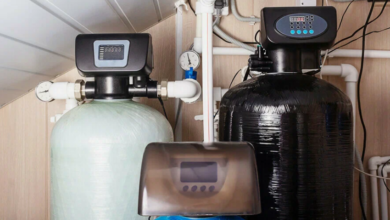What Are the Side Effects of Hyperbaric Therapy?

Hyperbaric therapy is a non-invasive treatment that uses oxygen under pressure to treat several conditions. It can treat decompression sickness, carbon monoxide poisoning, and diabetic wounds. Despite the many medical benefits of hyperbaric therapy, it’s not recommended for everyone. This therapy can have serious side effects, so make sure you consult with an expert before trying this approach.
Side Effects and Possible Complications of Hyperbaric Therapy
While many people who undergo hyperbaric therapy experience no side effects, there are some potential risks. Side effects are usually mild and easily treated. The most common side effect is feeling lightheaded when you stand up because of the change in air pressure. Other side effects include:
Air Embolism
One of the most dangerous risks associated with hyperbaric therapy is air embolism. Air embolism occurs when air bubbles enter your bloodstream through open veins or arteries, causing a blockage of blood flow. The bubbles can travel to your heart or brain, leading to a heart attack or stroke. If you lose consciousness or feel dizzy, stop your session immediately and consult your doctor. You may even experience chest pain and shortness of breath. If these symptoms occur during your session, don’t panic. They are easily treated under medical supervision.
Oxygen Toxicity, Sinusitis, and Lung Issues
As your body absorbs more oxygen than it normally would during hyperbaric therapy, there is a risk of oxygen toxicity. This condition happens when the lungs absorb too much oxygen, leading to pulmonary edema (fluid buildup in the lungs) or pneumothorax (collapsed lung). Sinusitis can occur if the air is trapped in the sinuses because of rapid increases in pressure inside the chamber. However, this is rare as most patients will have an equalizing tube inserted into their nose before treatment to allow any trapped gas to escape. During hyperbaric therapy, those with asthma or chronic obstructive pulmonary disease are at higher risk for lung issues.
Barotrauma and Ear Damage
The high pressure used during HBOT can cause barotrauma to your ears because of changes in air pressure. You’re at a higher risk of experiencing barotrauma if you already suffer from hearing problems, have an ear infection, or have blockage within your nasal passages or sinuses. Common barotrauma symptoms are severe ear pain or temporary hearing loss.
Migraine and Cluster Headaches
The increased pressure in the chamber may trigger or worsen migraine or cluster headaches. Migraine and cluster headaches are not common side effects of hyperbaric therapy, but they occur in some patients. If you experience headaches during hyperbaric oxygen therapy, notify your doctor so they can adjust your air pressure. If you suffer from migraines or cluster headaches, inform your physician beforehand.
Emotional Disturbances
Some patients experience emotional disturbances during or after a treatment session. While rare, these disturbances may include agitation, anxiety, or even panic attacks. The patient may also develop claustrophobia during treatment due to the confined space inside the chamber. These symptoms usually go away once the treatment session ends or when you become accustomed to the treatment. Let your doctor know if you need them to stop the session early.
Decreased Vision
Due to changes in pressure, your vision may be blurry after leaving the hyperbaric chamber. This may last for 10 minutes before your vision returns to normal. Your vision will also change while you are in the chamber due to changes in air pressure. Notify your doctor if these changes persist.
Other side effects might include:
- Seizures (particularly in people with epilepsy)
- Nausea and vomiting
- Temporary nearsightedness
- Residue in your mouth from the oils used on the face mask
- Skin rashes or blisters (although these are rare)
More serious side effects include nitrogen embolism, which can cause pain in your joints, paralysis, or heart trouble.
Vision loss from cataracts or retinal detachment is more likely to happen if you have diabetes or are on certain medications such as steroids.
Hyperbaric Therapy Risk Factors
There are cases when this type of therapy shouldn’t be used because it can cause serious health problems. Let your doctor know if you have pre-existing medical conditions or take any medications. People with certain conditions may be predisposed to experiencing problems.
If you have asthma or pneumonia, hyperbaric therapy may be dangerous. It may also trigger seizures in people with seizure disorders. People with certain heart conditions may not tolerate hyperbaric oxygen therapy well. These include people who have congestive heart failure, unstable angina pectoris, pulmonary embolism, acute myocardial infarction, and cardiac arrhythmia. Pregnant women should avoid hyperbaric therapy because it is believed that the increase in carbon dioxide in the bloodstream could lead to congenital disabilities.
Relatively Safe Treatment
Despite the possibility of various side effects from hyperbaric therapy, the treatment is relatively safe. Several hyperbaric centers use this treatment to treat carbon monoxide poisoning, decompression sickness, and air embolism. It can also help people with brain abscesses or severe anemia or people who’ve had a stroke. It’s also used to treat certain skin infections, and it can boost immunity. Currently, HBOT is still being studied for various purposes, including treating burns and wounds.
Consult With Your Physician
To determine whether hyperbaric therapy is safe for you, consult with your physician. They will advise you on whether this treatment is right for you based on your medical history and current health conditions. If you are a good candidate, they’ll make all necessary arrangements to get you started on this treatment as soon as possible.
For more valuable information visit the website




